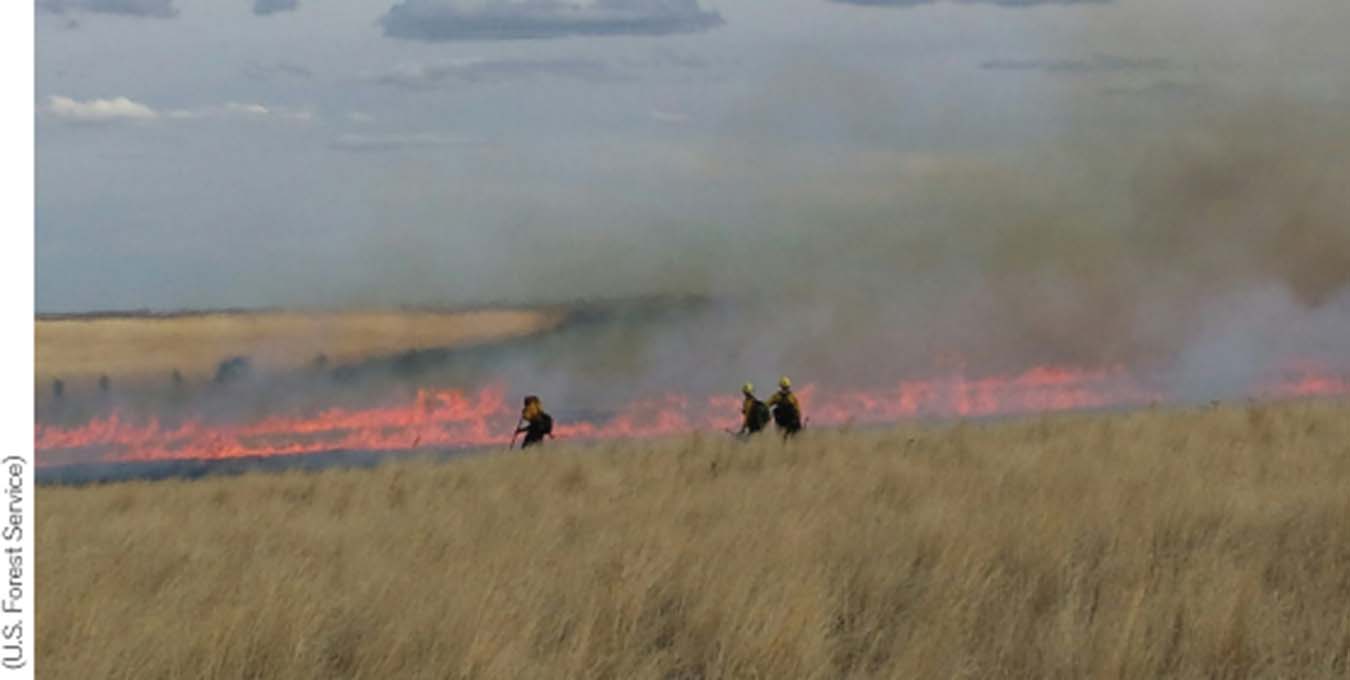4.11 Sustaining biodiversity and ecosystem services requires active management
In most situations, you cannot simply declare an area “protected” and expect that the species and ecosystems included in the area will sustain themselves. Managing protected areas to sustain their conservation value requires attention to the many environmental factors known to influence biodiversity, such as keystone species and disturbance.
Sustaining Crucial Species
119
One of the most important parts of managing a natural area is to ensure that important species are present and their populations are healthy. These crucial species generally fall into the categories we mentioned earlier as foundation species, ecosystem engineers, and keystone species. Reintroducing wolves to Yellowstone National Park was a conscious decision, in part, to help restore an ecosystem degraded by high populations of elk. After the wolves’ reintroduction, it has been crucial for field biologists like Doug Smith to monitor the wolf population and track their movements inside and outside the park. Although the wolf has been relatively successful at multiplying on its own, other species, such as the peregrine falcon, required years of captive breeding to help recover their numbers.
Controlling Invasive Species

What safeguards need to be in place before introducing another species to control an invasive species?
In ecosystems seriously damaged by invasive species, many land managers have instituted programs to control them and restore native species. For example, several such programs are aimed at controlling large-

Fire, Succession, and Management

What does the need for active management of protected areas suggest about the stability of ecosystems?
Fire is a critical factor for maintaining a wide variety of ecosystems, including grasslands. In protected areas within the temperate grassland biome, periodic fires are necessary to keep succession from converting grasslands to shrublands or forests (Figure 4.29). Lightning causes fires in grasslands naturally. However, humans began setting fire to grasslands long ago to encourage fresh growth by grasses that would attract game. Today, managers of grasslands in places like the Konza Prairie Preserve in eastern Kansas and the Tallgrass Prairie National Preserve use fire to prevent encroachment by trees and shrubs. Without this active fire management, the grasslands these preserves were created to protect would disappear and be replaced by forests. In other conservation areas, managers may suppress fires to achieve other management goals such as restoring previously cleared forest.

Think About It
Assuming that grazing and fire are sources of disturbance to grasslands, how would you manage grazing intensity and fire frequency to maximize species richness in a grassland preserve?
Why is simply putting a fence around an area and declaring it protected no guarantee that the biodiversity in the area is secure?